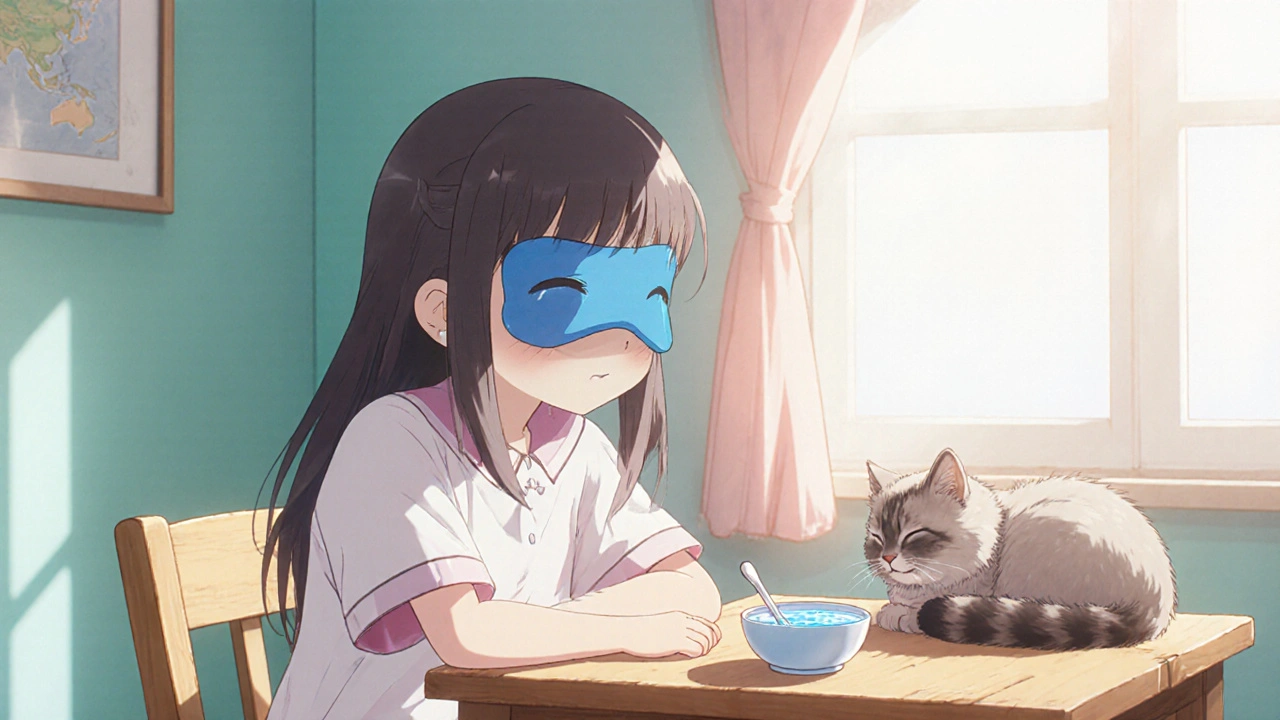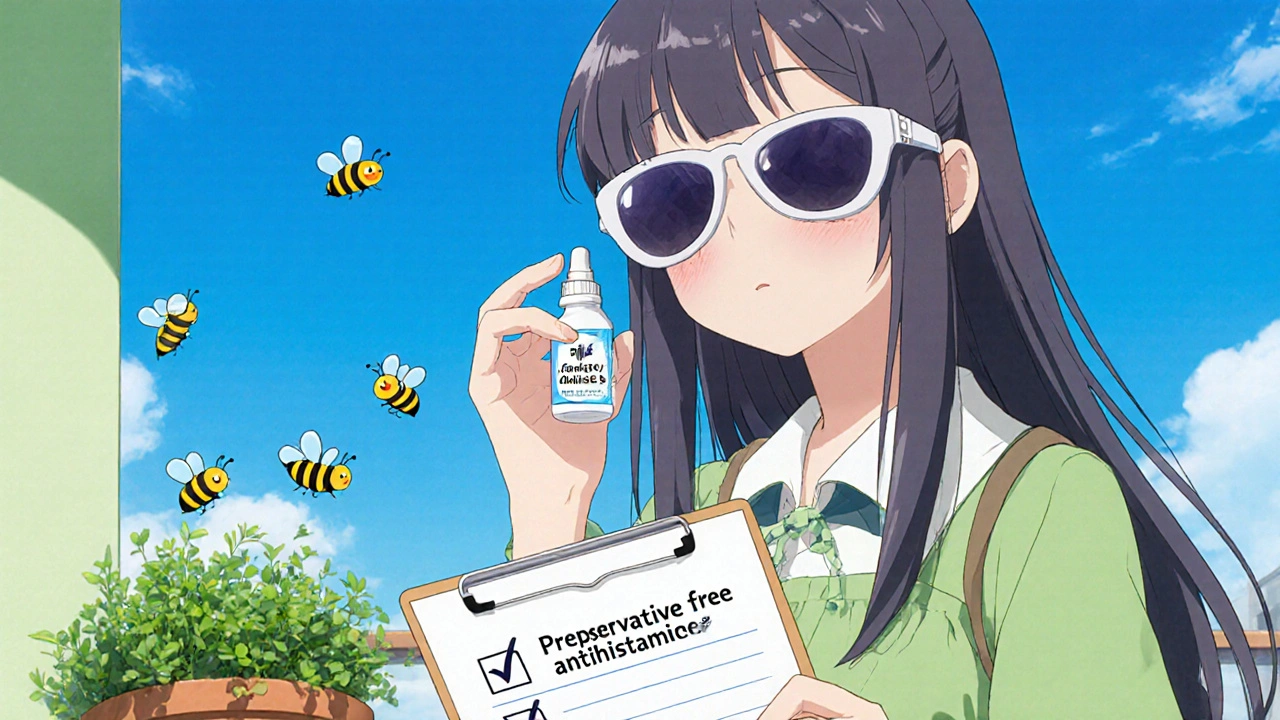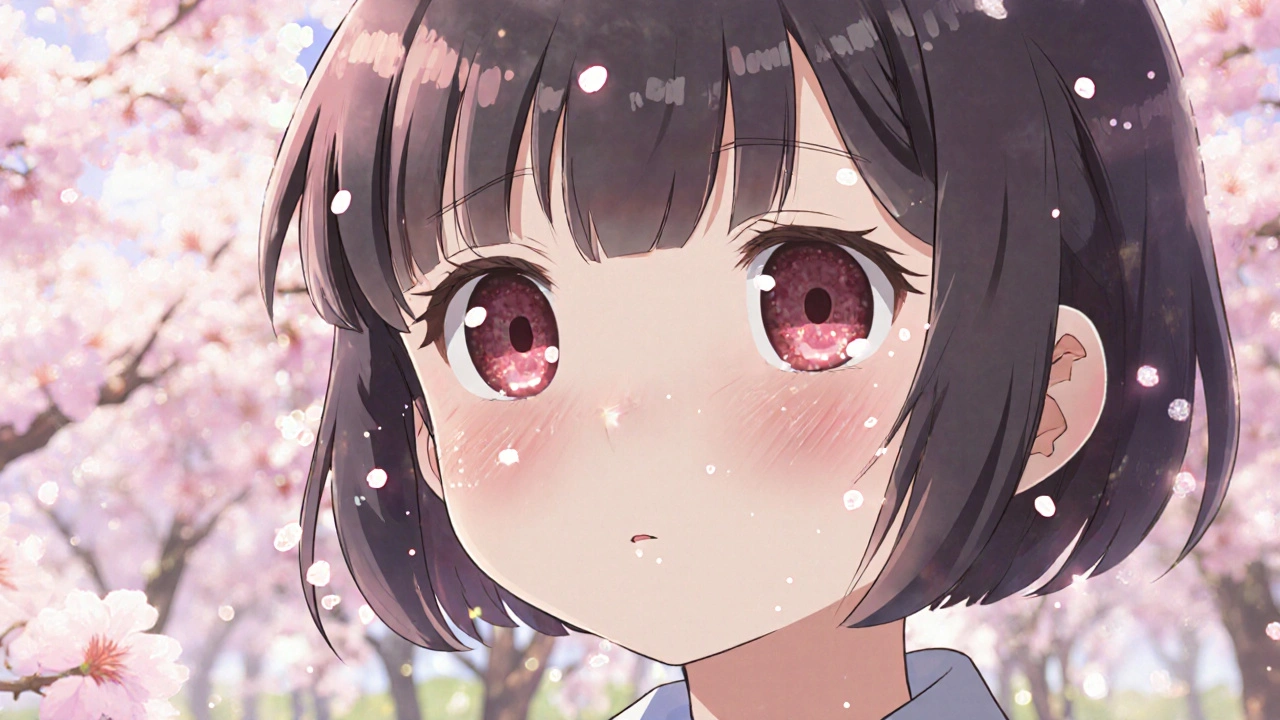Allergy Eye Relief Advisor
Find Your Relief Plan
Answer a few questions to get personalized recommendations for managing eye inflammation during allergy season.
Your Personalized Relief Plan
Quick Takeaways
- Identify pollen and other allergens that trigger eye inflammation.
- Use cold compresses and preservative‑free antihistamine drops for fast relief.
- Oral antihistamines help when symptoms are widespread.
- Keep lenses clean, stay hydrated, and limit outdoor exposure during peak pollen hours.
- Seek professional care if pain, vision changes, or symptoms last more than two weeks.
What Exactly Is Eye Inflammation?
When we talk about eye inflammation is a condition where the delicate tissues of the eye become red, swollen, and itchy. It can affect the conjunctiva (the thin membrane covering the white of the eye), the eyelids, or the tear film that keeps the eye moist. While a few days of irritation might be harmless, persistent inflammation can damage the cornea and affect vision.
Allergic Conjunctivitis: The Most Common Culprit
Allergic conjunctivitis is an inflammation of the conjunctiva caused by an allergic reaction. During pollen season, tiny particles trigger immune cells called mast cells to release histamine, a chemical that makes blood vessels leaky and nerves itchy.
Why Allergy Season Makes Eyes Trouble
Spring and early fall bring massive amounts of pollen from trees, grasses, and weeds. Pollen grains are light enough to stay airborne for hours and easily settle on the ocular surface. Other seasonal irritants-dust mites, mold spores, and even air pollutants-can amplify the reaction. When your eyes encounter these particles, the immune system reacts the same way it would to a bug bite: redness, swelling, tearing, and a burning sensation.

Immediate Relief: Home‑Based Strategies
Before reaching for medication, try these quick steps that often calm inflammation within minutes:
- Cold compress: Soak a clean washcloth in cold water, wring out excess, and place it over closed eyelids for 5‑10 minutes. The cold constricts blood vessels, reducing redness.
- Rinse with saline: Use sterile saline solution or a DIY mix of boiled, cooled water with a pinch of salt. Rinsing flushes pollen away without irritating the eye.
- Stay hydrated: Drinking plenty of water helps maintain a healthy tear film, preventing dry‑eye flare‑ups that can worsen inflammation.
Medication Options and How They Work
When home care isn’t enough, over‑the‑counter or prescription treatments target the biochemical pathways of allergy.
| Treatment | How It Helps | Typical Onset | Key Considerations |
|---|---|---|---|
| Antihistamine eye drops | Blocks histamine receptors on the ocular surface, reducing itch and redness. | 5‑15 minutes | Prefer preservative‑free formulas for contact‑lens wearers. |
| Oral antihistamines | Systemic suppression of histamine, helping both eyes and nasal symptoms. | 30‑60 minutes | May cause drowsiness; non‑sedating options (e.g., loratadine) are popular. |
| Mast‑cell stabilizers | Prevents mast cells from releasing histamine in the first place. | Several days of regular use | Best for preventative use before peak pollen days. |
| Corticosteroid eye drops | Powerful anti‑inflammatory that reduces swelling quickly. | Minutes to hours | Prescription only; long‑term use can raise infection risk. |
For most people, preservative‑free antihistamine drops (e.g., ketotifen) are the first line. If symptoms affect both eyes and the nose, adding a non‑sedating oral antihistamine (e.g., cetirizine) can provide all‑day comfort. Those with chronic or severe reactions may benefit from mast‑cell stabilizers like cromolyn, applied daily before pollen peaks.
Lifestyle Tweaks to Keep Inflammation at Bay
- Monitor pollen counts: Websites such as the National Allergy Bureau publish hourly data. Plan outdoor activities when counts are below 25 grains/m³.
- Wear sunglasses: Wrap‑around styles act as physical barriers, keeping pollen off your lashes.
- Maintain clean contact lenses: Use daily disposables or disinfect lenses nightly. Replace cases every three months.
- Limit indoor allergens: Run HEPA filters, wash bedding weekly, and keep windows closed on high‑pollen days.
- Nutrition support: Omega‑3 fatty acids and vitamin C can modestly dampen inflammatory responses.

When to Seek Professional Care
If you notice any of these red flags, schedule an appointment with an eye‑care professional promptly:
- Sharp pain or a feeling of a foreign object in the eye.
- Blurred vision that does not improve with blinking.
- Swelling that spreads to the eyelids or surrounding skin.
- Symptoms persisting longer than two weeks despite home treatment.
Eye doctors can rule out infections, prescribe stronger steroids if needed, and test for specific allergens via a conjunctival provocation test.
Preventing Next Season’s Flare‑Ups
Proactive steps taken now can reduce the frequency and severity of future episodes:
- Start mast‑cell stabilizers early: Begin one to two weeks before the first forecasted pollen surge.
- Allergy‑proof your home: Install air purifiers with true HEPA filters, and keep humidity below 50% to deter mold.
- Keep a symptom diary: Record date, pollen count, and what relief method you used. Patterns help you anticipate triggers.
Checklist: Daily Eye‑Inflammation Management
- Check pollen forecast each morning.
- Apply preservative‑free antihistamine drops if eyes feel itchy.
- Wear UV‑blocking sunglasses outdoors.
- Use a cold compress for sudden redness.
- Stay hydrated; aim for 8 glasses of water.
- Replace contact lenses as directed; clean case weekly.
- Take a non‑sedating oral antihistamine if nasal symptoms appear.
- Log any changes in a symptom journal.
Can I use regular over‑the‑counter eye drops for allergy‑related inflammation?
Yes, antihistamine eye drops like ketotifen or olopatadine are designed for allergy symptoms and work quickly. Avoid drops that contain vasoconstrictors (e.g., naphazoline) because they can worsen redness with repeated use.
Are there natural remedies that actually help?
Cold compresses, saline rinses, and omega‑3 supplements have modest evidence of benefit. They’re safe to combine with medication, but they won’t replace antihistamines for moderate‑to‑severe cases.
How long does it take for oral antihistamines to relieve eye symptoms?
Non‑sedating options such as loratadine or cetirizine start working within 30‑60 minutes. Full effect on ocular itching may appear after a few doses as the drug reaches steady state.
When should I stop using corticosteroid eye drops?
Only under a doctor’s guidance. Typically, treatment lasts 5‑7 days, after which a taper or switch to a milder agent is recommended to avoid increased infection risk.
Is it safe to wear contact lenses during allergy season?
Yes, but choose daily disposables if possible, and keep lenses and case clean. On high‑pollen days, consider switching to glasses to reduce exposure.

 Oct, 22 2025
Oct, 22 2025

Denver Bright
October 22, 2025 AT 14:43Cold compresses are the cheapest hack you can pull out of the kitchen drawer – just a wet washcloth chilled under the tap, slap it on closed lids for ten minutes and watch the redness melt away like ice on a summer sidewalk.
Kelli Benedik
October 22, 2025 AT 18:20😢 Oh my gosh, that cold compress feels like a tiny snowstorm on my eyes! 🌨️ I swear my allergies go from "meh" to "fireworks" in seconds, so that chill relief is basically a miracle. 🙏✨
cariletta jones
October 23, 2025 AT 08:13Check the pollen forecast first thing in the morning and throw on wrap‑around sunglasses – simple, effective, and it keeps most of the gunk off your lashes.
Kevin Hylant
October 24, 2025 AT 12:00Preservative‑free antihistamine drops are the go‑to for itchy eyes because they block histamine without hurting contact‑lens wearers.
Oliver Johnson
October 24, 2025 AT 13:23Most folks jump on steroid drops like they’re a magic bullet, but using them without a doctor’s order can invite infections and make your eyes more vulnerable – better to reserve them for truly severe cases.
Sireesh Kumar
October 25, 2025 AT 15:46Saline rinses work like a pressure washer for your eyes – boil some water, let it cool, add a pinch of salt, and flush the pollen right out; it’s safe, cheap, and doesn’t irritate the delicate tissue.
Gary Marks
October 25, 2025 AT 17:10Let me tell you why ignoring these simple eye‑care steps is a recipe for disaster that most people blissfully skip over. First, the eyes are the most exposed gateway for allergens, so every minute you spend rubbing them just spreads pollen deeper into the conjunctiva. Second, the inflammation cascade isn’t something you can “wait out” – histamine release leads to vascular leakage, swelling, and eventually can scar the cornea if left unchecked. Third, those over‑the‑counter drops that lack preservatives are formulated to be gentle, yet many still reach for older vasoconstrictor formulas that actually rebound and make the redness worse after a few uses. Fourth, hydration isn’t just a buzzword; adequate water intake maintains a stable tear film, which acts as the first line of defense against irritants. Fifth, sunglasses are not a fashion accessory only; they are a physical barrier that reduces the pollen load on your lashes by up to 80 percent, dramatically cutting down the need for medication. Sixth, using a daily disposable contact lens during peak pollen days is a smart move because you eliminate the buildup of allergen residues that can cling to reusable lenses. Seventh, a symptom diary may sound nerdy, but tracking pollen counts, symptoms, and what gives you relief creates a personal data set that can predict upcoming flare‑ups before they happen. Eighth, the importance of HEPA filtration in your home cannot be overstated – without it, indoor pollen can linger for hours, re‑exposing your eyes even after you’ve closed the windows. Ninth, omega‑3 supplements and vitamin C have modest anti‑inflammatory effects, and when combined with proper eye hygiene, they enhance overall resilience. Tenth, if any pain, vision blur, or swelling spreads beyond the lids, that’s a red flag that demands an eye‑care professional’s assessment immediately. Eleventh, corticosteroid eye drops are potent but should only be prescribed for short bursts under supervision, as long‑term use raises the risk of cataracts and glaucoma. Twelfth, mast‑cell stabilizers require consistent pre‑season use; they won’t work instantly but will blunt the histamine surge when pollen finally peaks. Thirteenth, the simple act of wiping your face with a clean towel after coming inside prevents cross‑contamination. Fourteenth, remember to change your pillowcases weekly – they’re a hidden reservoir for dust mites and spores. Fifteenth, and finally, the mental toll of chronic eye irritation can make you irritable and less productive, so taking proactive steps isn’t just about comfort, it’s about maintaining quality of life. All of these points together form a comprehensive defense plan; ignore them at your own risk.
Mary Keenan
October 26, 2025 AT 18:33Never wear contacts on high pollen days.